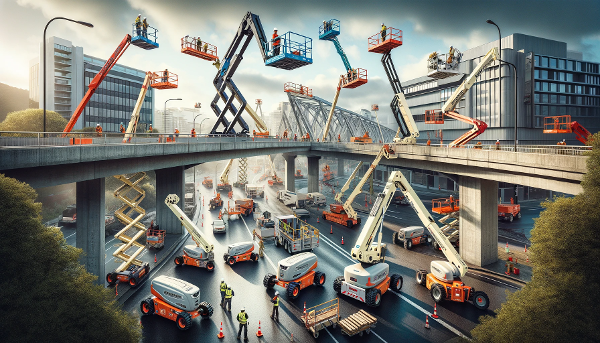The Growing Importance of Access Equipment in Infrastructure Development Projects
In recent years, the landscape of infrastructure development has undergone a significant transformation, driven by both technological advancements and evolving project requirements. Central to this change is the increasing reliance on various types of access equipment, which have become indispensable in the construction of bridges, highways, and public buildings. This shift not only marks a technological evolution but also underscores a commitment to safety and efficiency in some of the most challenging construction environments.
Access equipment, encompassing a range of machines such as scissor lifts, cherry pickers, and boom lifts, has long been a staple in construction sites. However, their role has expanded beyond mere utility to being a critical factor in project planning and execution. The modern infrastructure project is a complex undertaking, often characterised by tight deadlines, stringent safety standards, and the need for precision. In this context, access equipment is not just a tool but a facilitator of success.
One of the most visible impacts of access equipment in infrastructure projects is the enhanced efficiency they bring. In the construction of bridges, for instance, where working at height is a given, boom lifts and cherry pickers enable workers to reach high and awkward spots with ease. This capability is not just about reaching higher; it's about doing so quickly and safely, thereby reducing the time taken to complete tasks. In an industry where time is often equated with cost, the importance of this cannot be overstated.
The versatility of modern access equipment means that they can be adapted to a wide range of tasks and environments. From electric scissor lifts that are ideal for indoor use, emitting no fumes and operating quietly, to rough terrain lifts designed for the unpredictable conditions of outdoor sites, there is a machine for almost every need. This versatility is particularly crucial in a country like New Zealand, where construction sites can range from urban centres to remote and rugged landscapes.
Safety is another area where the impact of access equipment is profoundly felt. The construction industry, historically known for its high-risk environment, has seen a positive shift with the integration of these machines. Access equipment is designed with safety at its core, equipped with features like guardrails, stabilisers, and emergency stop buttons. By using these machines, the risk associated with working at height, a leading cause of accidents in construction, is significantly mitigated.
This focus on safety is not just about protecting workers. It also has a broader impact on project timelines and costs. Accidents and injuries can lead to delays, increased insurance premiums, and legal complications, all of which can derail a project. By enhancing safety, access equipment helps in keeping projects on track and within budget.
The role of access equipment in the modernisation of infrastructure cannot be understated. As New Zealand continues to expand and upgrade its infrastructure, the demands on construction projects grow. These projects are not just about building new structures but also about upgrading existing ones to meet contemporary standards and needs. Access equipment enables this by providing the means to work efficiently and safely in a variety of settings, from retrofitting old buildings to constructing state-of-the-art facilities.
The environmental aspect of infrastructure projects is increasingly coming to the fore. As the world grapples with climate change, there is a growing emphasis on sustainable construction practices. Access equipment plays a role here as well. The latest models are more energy-efficient, with some even offering electric or hybrid options, thereby reducing the carbon footprint of construction activities.
The integration of access equipment in infrastructure projects also reflects a shift in the skill sets required in the construction industry. Operating these machines requires specialised training and certification, underscoring the importance of skilled labour in modern construction. This has led to a rise in training programmes and a focus on continuous learning, ensuring that workers are not only safe but also proficient in using these machines.
Looking ahead, the role of access equipment in infrastructure development is set to grow even further. As projects become more ambitious and the focus on safety and efficiency intensifies, these machines will continue to be a key component in the construction landscape. They are not just tools but partners in the quest to build a safer, more efficient, and sustainable future.
The growing importance of access equipment in infrastructure development is a multifaceted development, reflecting changes in technology, safety standards, and project requirements. In New Zealand, where the diversity of landscapes and the push for modernisation present unique challenges, this equipment is not just facilitating construction but reshaping it. As the country continues to grow and evolve, the role of access equipment in building the infrastructure of tomorrow will remain indispensable, a testament to the ever-evolving nature of construction and the relentless pursuit of progress.
